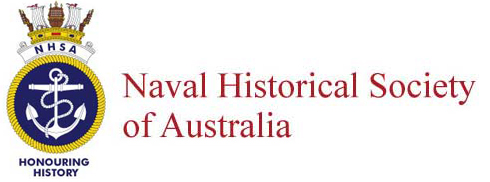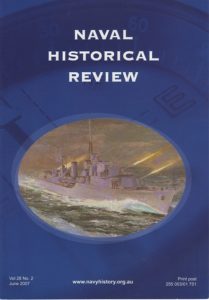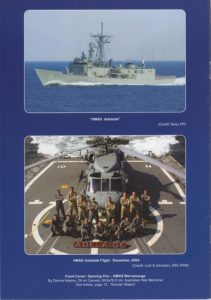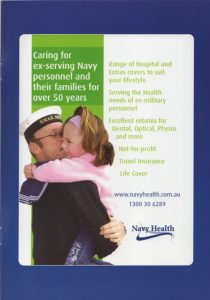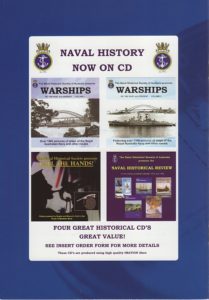- Author
- A.N. Other and NHSA Webmaster
- Subjects
- WWI operations
- Tags
-
- RAN Ships
- None noted.
- Publication
- June 2002 edition of the Naval Historical Review (all rights reserved)
“Well, to go on. At 12 miles range, while the first part of the action was being fought, we knew all about the shells that were hitting us, but many young fellows who were on board, only having just joined the Navy, stuck to their work and their stations as if we were simply at practice. They never turned a hair. The Germans were firing erratically, and many of their salvos, though they hit our sides, dropped back into the sea without exploding. Some were different, however. One entered the wardroom, and chairs, tables, sideboards, etc. went out in matchwood; and another lobbed in the padre’s cabin and cleaned it out as clean as a whistle, leaving him no more than what he stood up in. After the action he came home in an assortment of garments far from clerical, lent by more fortunate officers who had some things left. One shell hit our safe, and burst it to glory, and two or three thousand sovereigns were blown all over the decks. The sailors’ fire party was ordered to retrieve the loss, and return the missing gold to the paymaster. This official was almost off his head over the loss of his treasured gold, and I fancy many a sailor had an extra spree when we returned home.
“To me the most interesting part of the fight was the way the Admiral manoeuvred our ships at 27 knots to put the enemy out as far as range was concerned. We were turned and swung at all conceivable angles, but, in spite of this, the Germans fired very accurately at first; but as ship after ship of theirs was hit their firing deteriorated, while when we got hit both officers and men seemed to brace up and get cooler, and the word went round. `Steady; we’ll give the blighters more than they can give us.’
“By 3 o’clock their flagship, the Scharnhorst, was afire to her tops, but the crew, who were heroes all, kept on firing the only gun left. They were men worth fighting. One of our salvos lifted her forward barbette clean into the sea. Admiral Sturdee made a signal that if she would haul down her colours and surrender we would come aboard and save all. Her answer was another shot from her last gun, and so there was nothing else left for us to do but to sink her. She went down grandly, bows first; her flag flying with her crew, or what was left of them, on the quarter-deck, game to the end. We steamed over the spot, and flung out ropes for any survivors, as we could not put out a boat, all ours being long ago blown away. Another cruiser behind us was picking up other survivors from the German ships, and it was pitiable to see them, whether rescued or not. Hundreds swam away from our ropes and refused to be rescued, and we learned why from those who took a chance and came aboard. It appears that the German Admiralty, (according to them), had spread a report that any naval prisoners captured by the British were always tortured to make them tell as much as possible, and the poor devils believed this devilish story spread by these fiends who started the world-wide war. When they found that they were warmed and fed and freshly clothed and treated more as guests than as prisoners their gratitude knew no bounds, and their remarks about Von Tirpitz and his satellites, who had led them to believe that the British were the vilest creatures on earth, were well worth listening to.
